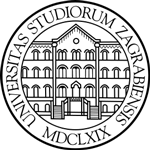Coagulation and Adsorption Treatment of Printing Ink Wastewater
Abstract
The intention of the study was to improve the efficiency of total organic carbon (TOC) and colour removal from the wastewater samples polluted with flexographic printing ink following coagulation treatments with further adsorption onto activated carbons and ground orange peel. The treatment efficiencies were compared to those of further flocculation treatments and of coagulation and adsorption processes individually. Coagulation was a relatively effective single-treatment method, removing 99.7% of the colour and 86.9% of the organic substances (TOC) from the printing ink wastewater samples. Further flocculation did not further eliminate organic pollutants, whereas subsequent adsorption with 7 g/l of granular activated carbon further reduced organic substances by 35.1%, and adsorption with 7 g/l of powdered activated carbon further reduced organic substances by 59.3%. Orange peel was an inappropriate adsorbent for wastewater samples with low amounts of pollution, such as water that had been treated by coagulation. However, in highly polluted printing ink wastewater samples, the adsorption treatment with ground orange peel achieved efficiencies comparable to those of the granular activated carbon treatments.






